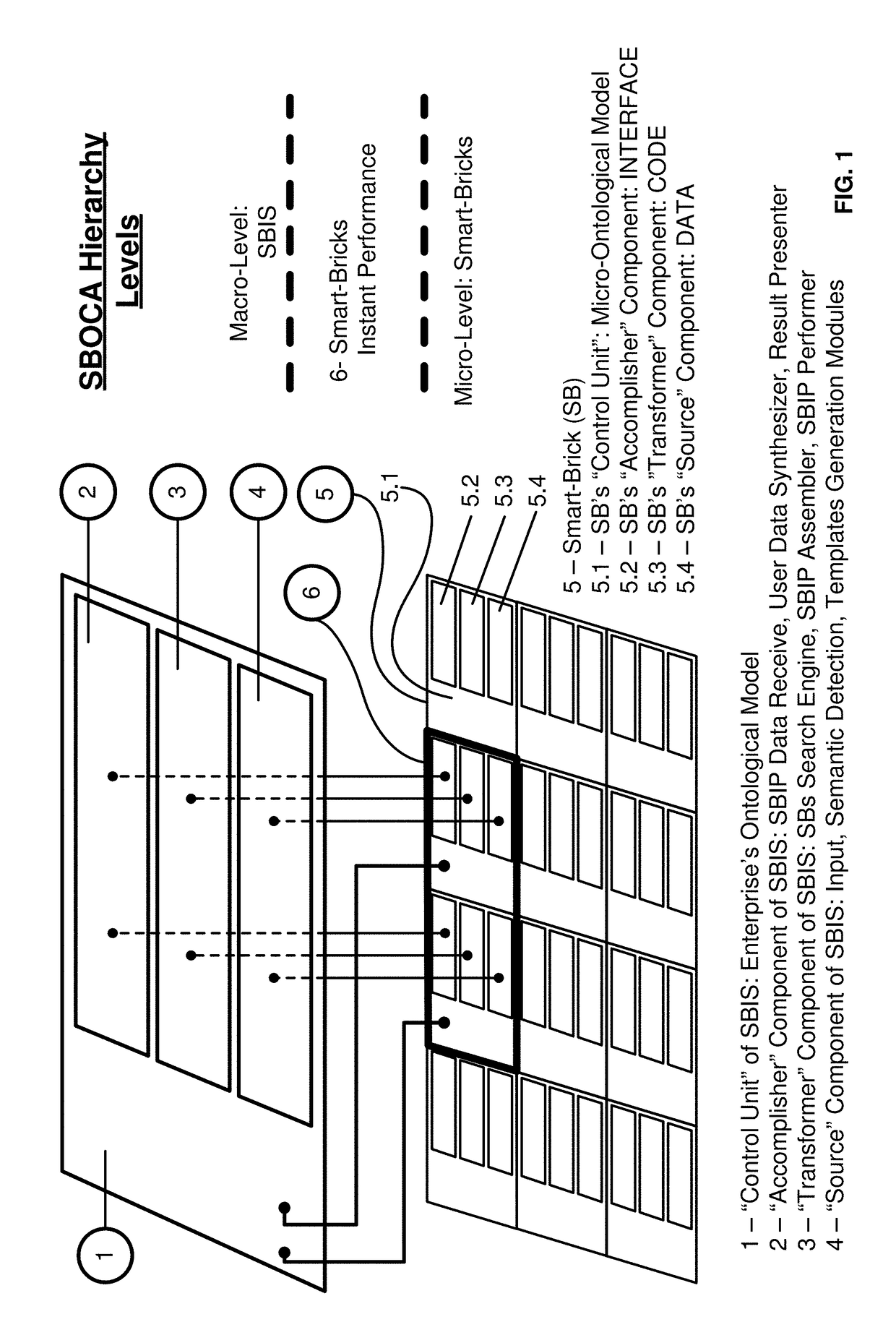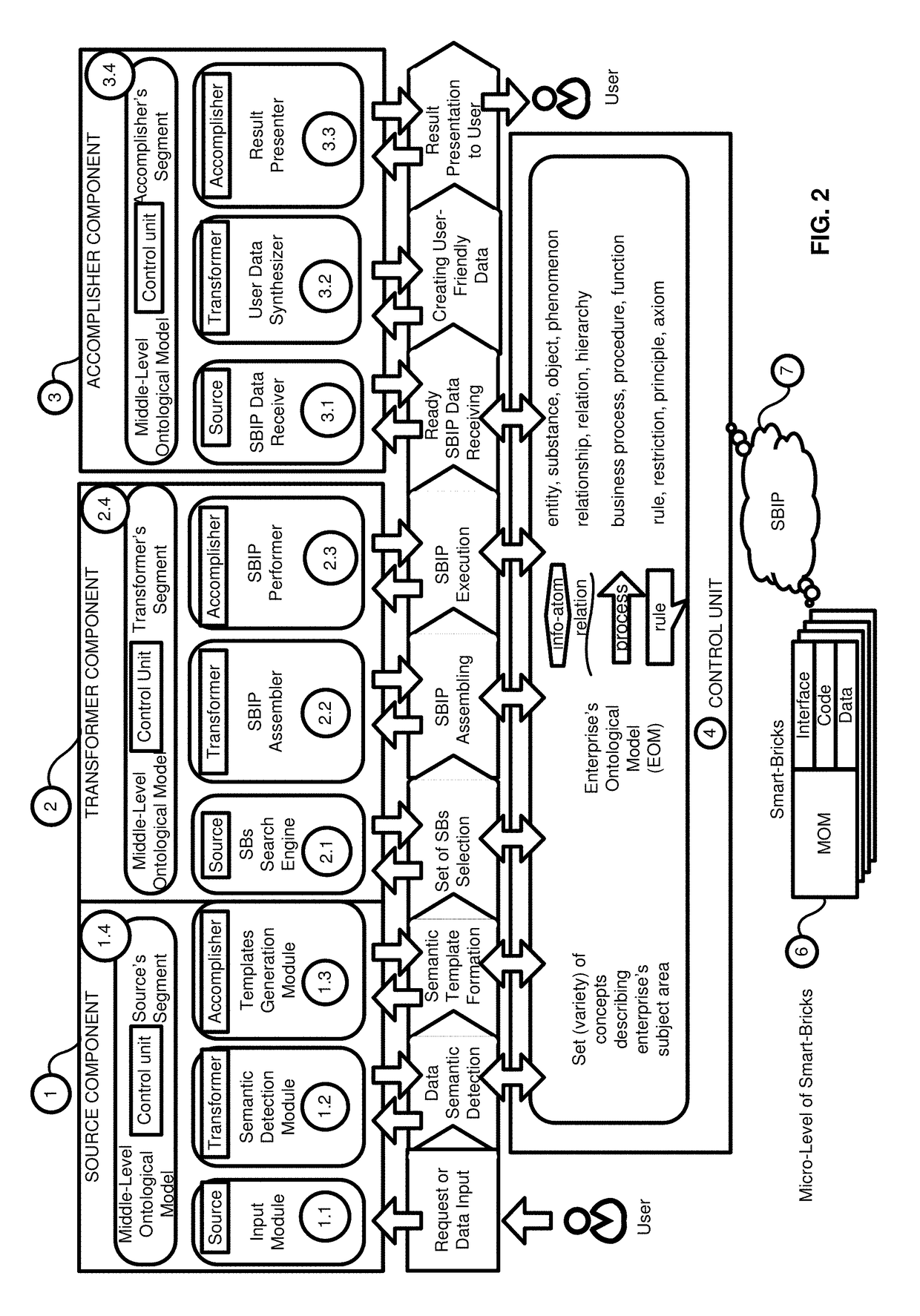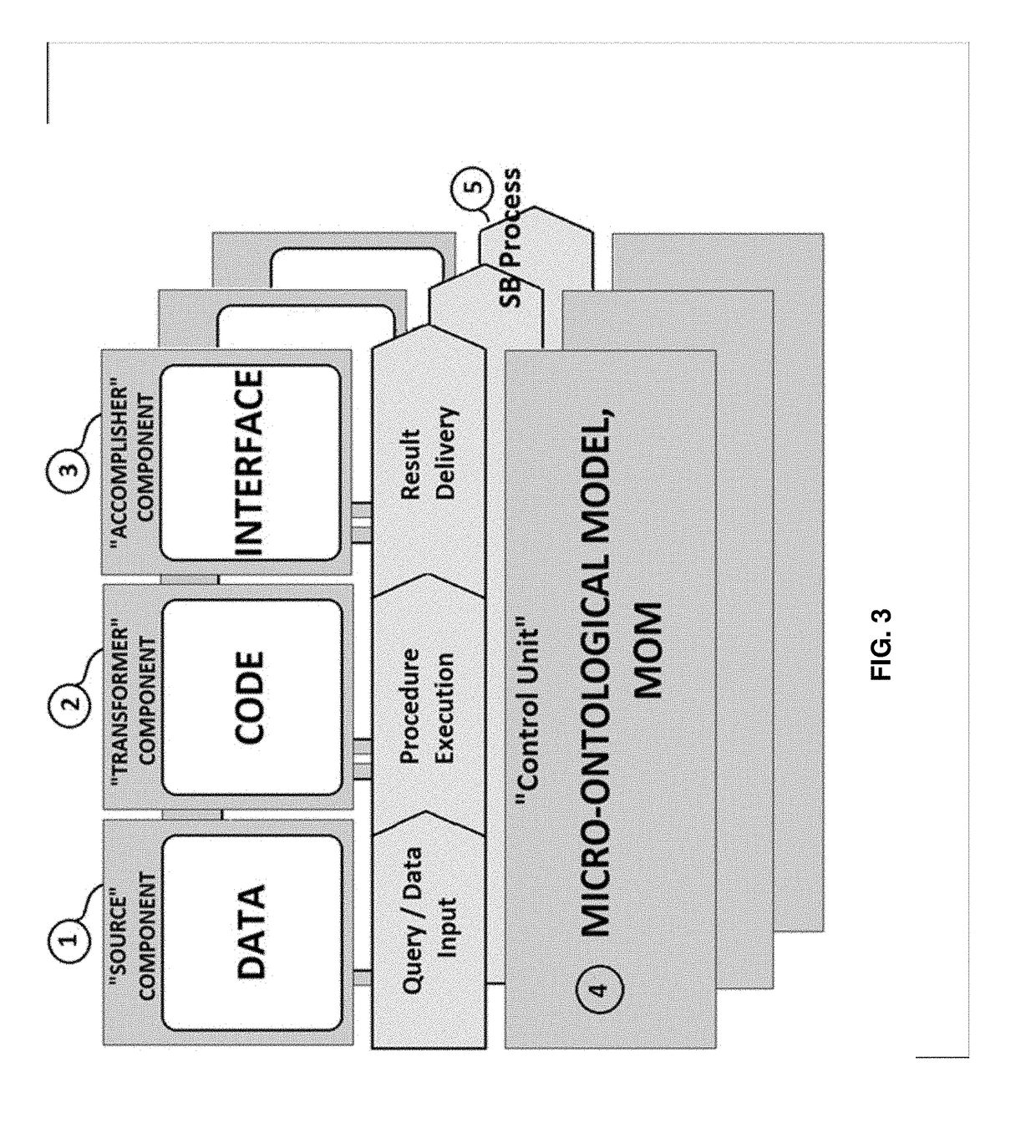Smart bricks information system
a technology of information system and bricks, applied in the field of information system, can solve the problems of conventional systems experiencing several problems, real tasks of information processing, and the functional flexibility and adaptability of these systems, and achieve the effect of improving the functional flexibility of enterprise management information system
- Summary
- Abstract
- Description
- Claims
- Application Information
AI Technical Summary
Benefits of technology
Problems solved by technology
Method used
Image
Examples
Embodiment Construction
[0056]Reference will now be made in detail to the preferred embodiments of the present invention, examples of which are illustrated in the accompanying drawings.
[0057]In an exemplary embodiment, a method, system and computer product for a Smart-Bricks Information System (SBIS) based on Smart-Bricks and Ontology-Centric Architecture, which improves functional flexibility of Enterprise Management Information Systems and their adaptability to a subject area of the enterprise, is provided.
[0058]The exemplary embodiment solves the problems of lack of adaptability and lack of flexibility of information systems. In order to provide adaptability and flexibility of the IS, the enterprise's information space is divided into a plurality of universal micro-blocks (Smart-Bricks (SB) Microsystems). According to the exemplary embodiment, the SB implements the following operations: contains all necessary and sufficient system parts for the functioning of each micro-system (data, code, interface); s...
PUM
 Login to View More
Login to View More Abstract
Description
Claims
Application Information
 Login to View More
Login to View More - R&D
- Intellectual Property
- Life Sciences
- Materials
- Tech Scout
- Unparalleled Data Quality
- Higher Quality Content
- 60% Fewer Hallucinations
Browse by: Latest US Patents, China's latest patents, Technical Efficacy Thesaurus, Application Domain, Technology Topic, Popular Technical Reports.
© 2025 PatSnap. All rights reserved.Legal|Privacy policy|Modern Slavery Act Transparency Statement|Sitemap|About US| Contact US: help@patsnap.com



